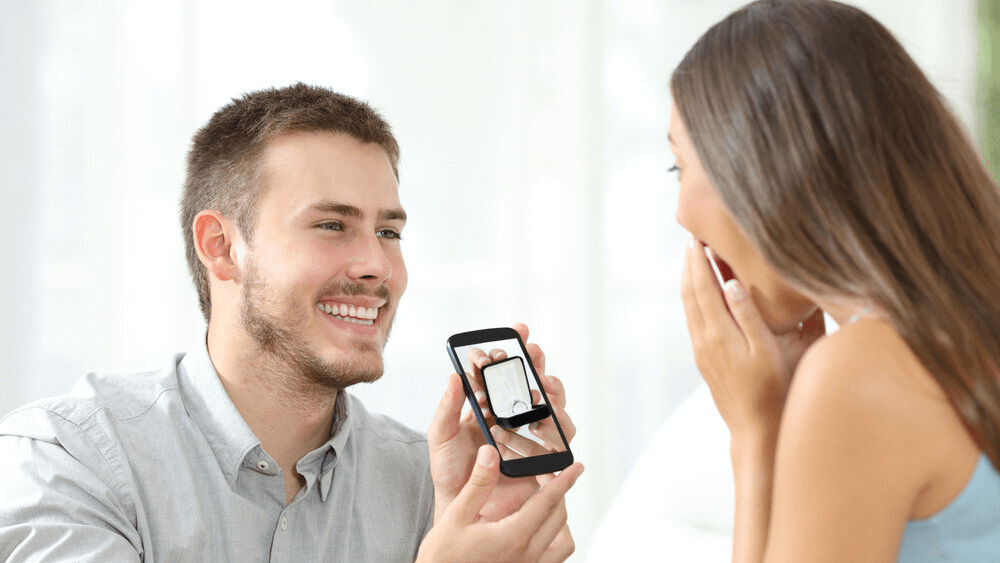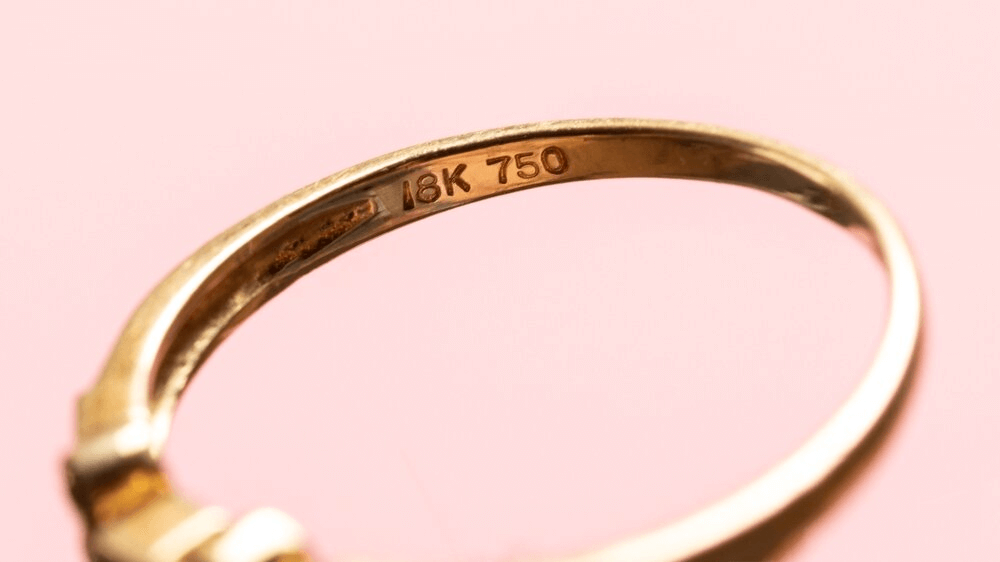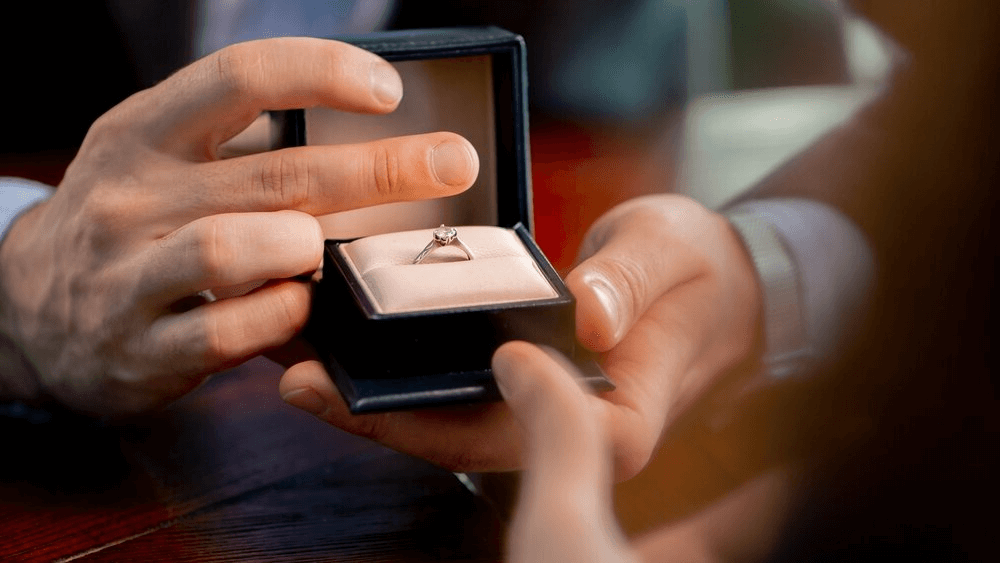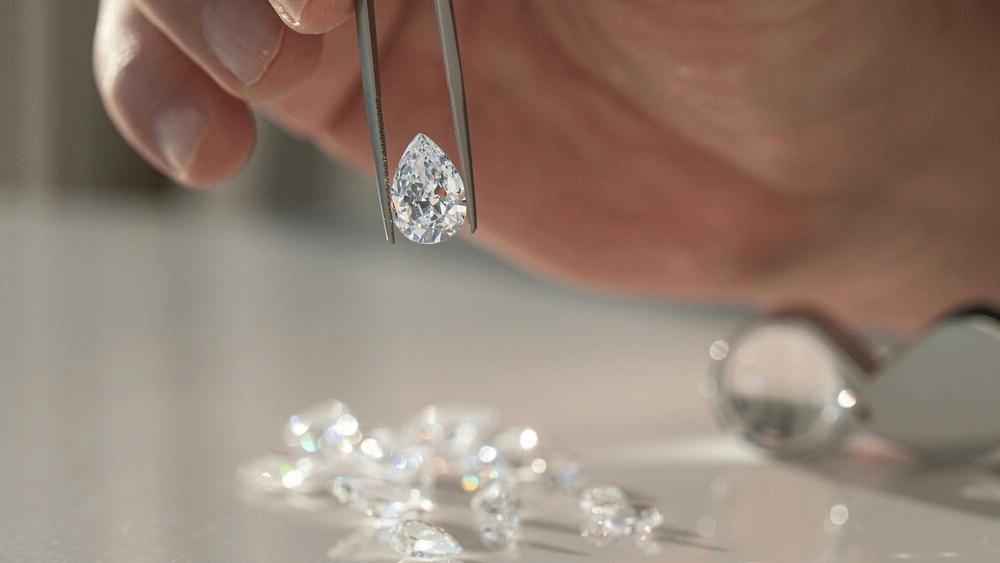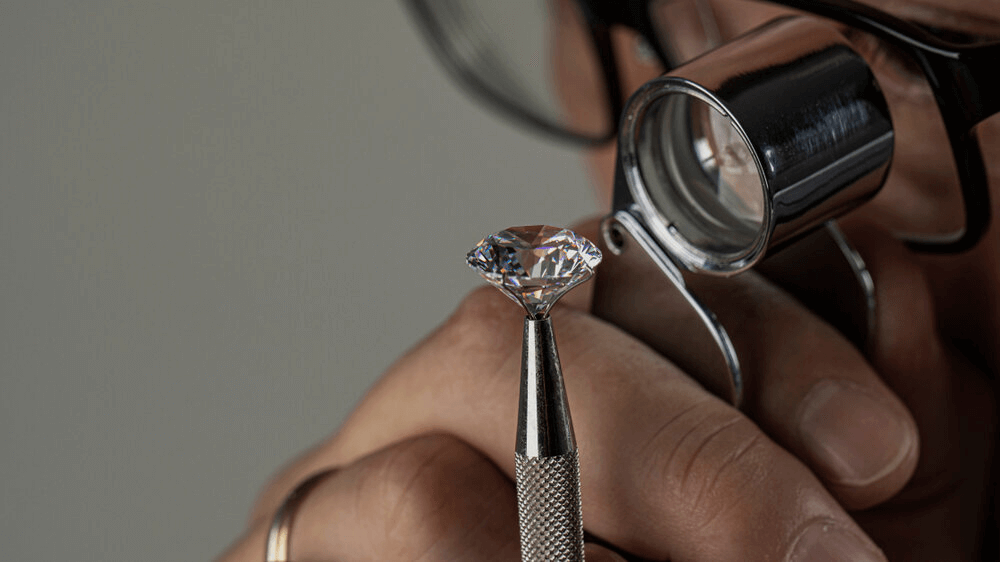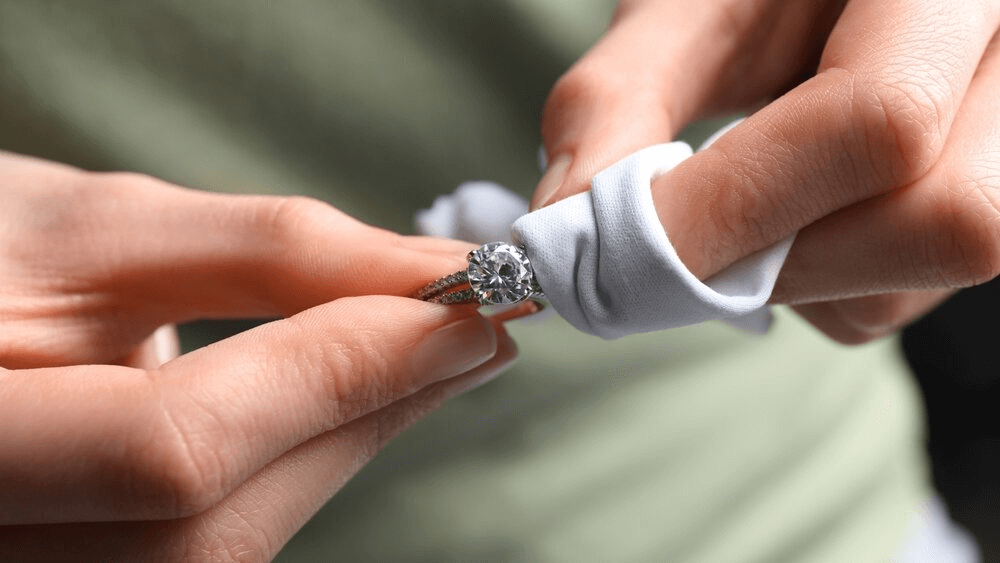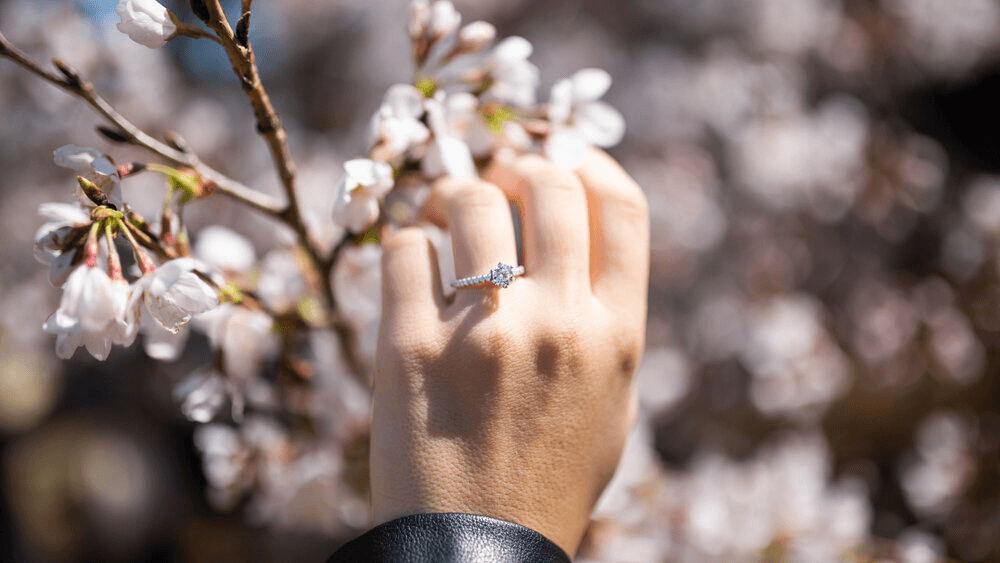You Won’t Believe the History of Engagement Rings

By Gary A.

Edited by Olivia H.
Published Aug 13, 2024
Edited on Mar 31, 2025
Romance is about as modern as the Colosseum, although, when it comes to sparkle and luxury, we do it better than anyone else. Brush up on your engagement ring history here.

Navigate this guide:
- 7 Quick Tips for Understanding Engagement Ring History
- Introduction to Engagement Rings
- Chapter 1: Ancient Beginnings
- Chapter 2: Medieval to Renaissance Innovations
- Chapter 3: The Diamond Revolution
- Chapter 4: Modern Engagement Ring Trends
- Our Expert Take: The Future of Engagement Rings
- 9 Frequently Asked Questions About Engagement Ring History
Before we dive deeper into the specifics, here are some practical tips to help guide your decision-making process:
7 Quick Tips for Understanding Engagement Ring History
The history of engagement rings is not just a tale of evolving fashion and tradition; it’s also a guide that can inform your decision when purchasing a diamond engagement ring today. By understanding the journey of engagement rings through time, buyers can make more informed choices that honor tradition while embracing personal taste and value. Here are practical tips rooted in the rich history of engagement rings:
- Tip 1: Consider the Symbolism of the Stone
- The choice of a diamond has historical significance, symbolizing durability and eternal love. When selecting your diamond, think beyond the 4Cs (cut, color, clarity, and carat) and consider what the stone represents. The history of using diamonds in engagement rings, popularized in the 20th century, underscores the value of choosing a stone that embodies your personal values and the depth of your commitment.
- Tip 2: Embrace Historical Designs with a Modern Twist
- Engagement ring designs have evolved from the simple bands of ancient Rome to the intricate settings of the Victorian era and beyond. When choosing your ring, consider designs that have stood the test of time. A solitaire setting, for instance, has been popular since the late 19th century and remains a classic choice. However, don’t be afraid to incorporate modern elements into these traditional designs to create a piece that’s uniquely yours.
- Tip 3: Understand the Cultural Significance
- Engagement rings carry different meanings across cultures, influenced by centuries of tradition. For example, the ancient belief in the vena amoris—thought to be a vein running directly from the fourth finger to the heart—highlights the ring’s significance as a symbol of love and commitment. Recognizing these cultural nuances can add depth to the choice of your engagement ring, making it a more meaningful symbol of your union.
- Tip 4: Reflect on the Evolution of Ring Materials
- The materials used in engagement rings have varied greatly over time, from iron and flint in ancient times to gold, platinum, and diamonds in more recent history. This evolution reflects changes in availability, technology, and taste. Today, consider sustainable and ethical options, such as recycled metals and conflict-free diamonds, to align your choice with contemporary values while acknowledging the ring’s historical journey.
- Tip 5: Acknowledge the Influence of Iconic Rings Throughout History
- Famous engagement rings, such as those belonging to royalty or celebrities, have often set trends and influenced public preferences. While choosing a ring, it might be inspiring to look at these iconic pieces for inspiration. However, it’s important to tailor your choice to what resonates personally rather than simply following a trend.
- Tip 6: Consider the Ring’s Future Heirloom Potential
- Engagement rings are not just for the present; they’re also future heirlooms. This perspective, rooted in the tradition of passing down rings through generations, emphasizes the importance of choosing a timeless design and high-quality materials. Consider how your choice will stand the test of time and be cherished by future generations.
- Tip 7: Pay Attention to the Craftsmanship
- The craftsmanship of engagement rings has evolved, from the hand-forged rings of ancient times to today’s precision-cut diamonds and intricate settings. High-quality craftsmanship ensures that the beauty of the ring endures, echoing the lasting nature of the commitment it symbolizes. Opt for a ring that showcases skilled artistry, ensuring it lasts as long as your love.
Now that you’ve got these practical tips, use Jeweler AI below to find the perfect engagement ring that suits your style and budget:
Introduction to Engagement Rings
We’ve been finding elaborate and luxurious ways to declare our love for one another for pretty much all of human history. True, the ancient Greeks weren’t sealing the deal with a platinum, tension set solitaire, but the thought is what counts: push the boat out, splash the cash, and make your one-and-only feel like royalty when they say, ‘Yes’.
These shimmering circles aren’t just pretty adornments; they’re loaded with meaning. They’re promises made tangible, dreams crystallized into precious materials. But how did we get here? How did it catch on? What moments defined the history of proposals and engagements? Here’s a whistle-stop tour – all aboard the love boat.
Chapter 1: Ancient Beginnings
Long before De Beers and Tiffany & Co., our ancestors were sealing the deal with rings. But they looked a bit different back then.
Roman and Egyptian Origins
Ancient Rome: a burly centurion slips an iron band onto his beloved’s finger. Not exactly the stuff of modern fairy tales, but it was the height of romance back then. Meanwhile, in Egypt, pharaohs were exchanging rings made of braided reeds. Talk about biodegradable bling!
Symbolism and Tradition
These early rings weren’t just for show. The circle symbolized eternity, while the open center represented a gateway to the future. Pretty deep stuff for what essentially started as fancy handcuffs (yes, really – some early rings were thought to bind the couple together).
{{wizard}}
Chapter 2: Medieval to Renaissance Innovations
As we roll into the Middle Ages, things start to get a bit more sparkly.
The First Diamond Engagement Ring
Enter Archduke Maximilian of Austria, the OG of diamond ring givers. In 1477, he proposed to Mary of Burgundy with a ring featuring diamonds in the shape of an ‘M’. Subtle, Max. Real subtle.
Cultural Shifts and Symbolism
During this time, rings evolved from simple bands to more elaborate designs. Gimmel rings, featuring interlocking bands, became popular. They were like the fidget spinners of the Renaissance but with more class and permanence.
Chapter 3: The Diamond Revolution
Fast forward to the late 19th century, and diamonds are about to hit the big time.
The De Beers Phenomenon
Enter De Beers, stage left. These guys didn’t just corner the diamond market; they practically invented it. They turned what was once a rare luxury into a must-have for every engagement.
“A Diamond is Forever” Campaign
In 1947, Frances Gerety penned the slogan “A Diamond is Forever” for De Beers. Four words that changed the game forever. Suddenly, everyone wanted a rock that would outlast their love (and possibly their patience).
Chapter 4: Modern Engagement Ring Trends
Today, engagement rings are as diverse as the couples who wear them.
From Solitaires to Colored Gemstones
While the classic solitaire still reigns supreme, couples are increasingly opting for unique designs. Colored gemstones are making a comeback, with sapphires, emeralds, and even opals stealing the spotlight.
Ethical and Sustainable Choices
Modern lovebirds are looking beyond the sparkle. Lab-grown diamonds, recycled metals, and ethically sourced gems are becoming increasingly popular. It’s all about having a clear conscience to match that clear stone.
Our Expert Take: The Future of Engagement Rings
As we look ahead, one thing’s clear: engagement rings aren’t going anywhere. But they are evolving. From smart rings that track your vitals to rings made from space metals, the future of engagement rings is as bright as a well-cut diamond.
Whether you’re a traditionalist or a trendsetter, there’s a ring out there for you. After all, love comes in all shapes and sizes – why shouldn’t rings do the same?
9 Frequently Asked Questions About Engagement Ring History
- Q: What is the origin of the engagement ring tradition?
- A: The tradition of engagement rings dates back to Ancient Rome, where rings were used as a symbol of love and a promise of marriage. Initially, these rings were made of simple materials like iron but later evolved to include precious metals and gemstones.
- Q: When did diamond engagement rings become popular?
- A: Diamond engagement rings became popular in the late 19th century but truly gained prominence in the 20th century, especially after De Beers’ 1947 ad campaign, “A Diamond is Forever,” which solidified the diamond’s status as the preferred stone for engagement rings.
- Q: Why are engagement rings worn on the left hand?
- A: This tradition stems from the ancient Roman belief in the “vena amoris” or “vein of love,” thought to run directly from the left ring finger to the heart. Although this has been medically disproven, the tradition persists in many cultures.
- Q: How have engagement ring styles changed over time?
- A: Engagement ring styles have evolved significantly, from the simple bands of ancient times to the ornate designs of the Victorian era, and the sleek, modern styles of today. Trends have varied widely, including the materials, gemstones, and designs used.
- Q: What was the first recorded diamond engagement ring?
- A: The first recorded diamond engagement ring was given by Archduke Maximilian of Austria to Mary of Burgundy in 1477. This event is often credited with starting the trend of diamond engagement rings among European nobility.
- Q: Can engagement rings be made from materials other than diamonds?
- A: Yes, engagement rings can be made from a variety of gemstones and materials. Throughout history, rings have featured stones like sapphires, rubies, and emeralds, as well as non-traditional materials like wood, bone, and metal alloys.
- Q: Are there any famous historical engagement rings?
- A: Yes, several historical engagement rings have gained fame, such as the sapphire and diamond ring given to Princess Diana by Prince Charles, which is now worn by Catherine, Duchess of Cambridge. Queen Elizabeth II’s diamond solitaire ring from Prince Philip and Jackie Kennedy’s emerald and diamond ring from John F. Kennedy are also iconic.
- Q: How do cultural differences affect engagement ring traditions?
- A: Cultural differences can significantly influence engagement ring traditions, including the choice of material, the design of the ring, and even which hand the ring is worn on. For example, in some cultures, both partners wear engagement rings, and in others, the ring’s design and material might have specific symbolic meanings.
- Q: What should be considered when choosing an engagement ring?
- A: When choosing an engagement ring, consider the wearer’s style preferences, lifestyle, and the ring’s durability. It’s also important to think about the ring’s symbolism and how it reflects the couple’s unique relationship and values.
Embark on a journey with Jeweler AI to discover the perfect engagement ring that echoes centuries of love stories. Your timeless symbol of commitment awaits.
FOLLOW-UP GUIDE SERIES




